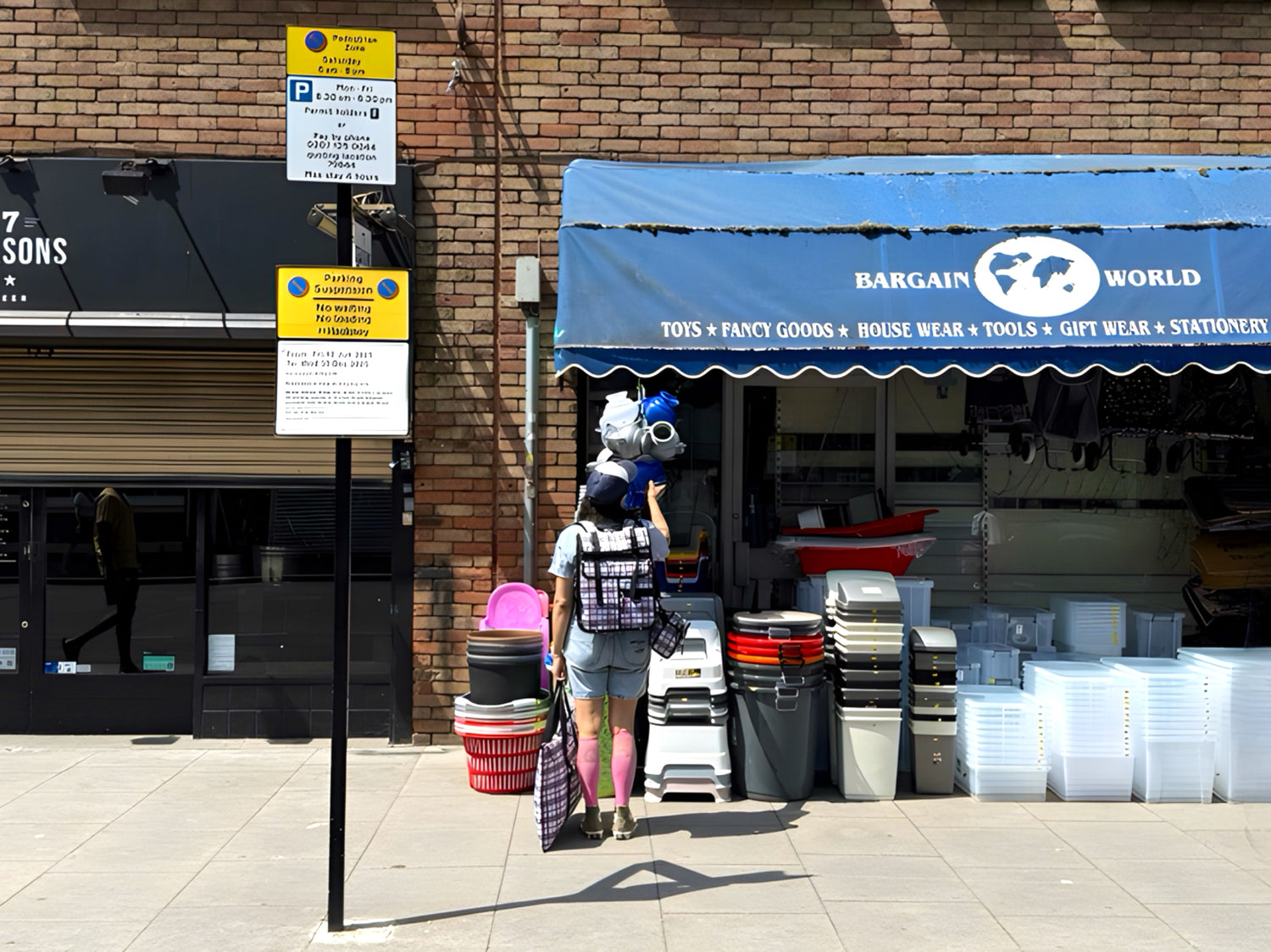The Iconic Tartan Laundry Bag: A Symbol of Migration and Displacement

The humble tartan laundry bag, often instantly recognisable by its blue, red, and white (or black red and white) checkered pattern, has transcended its original utilitarian function to become an unlikely symbol of migration, displacement, and resilience. Known by different names around the world a “Ghana Must Go” in West Africa, “Chinatown tote” in parts of North America, 'Sac Tati' in France and “refugee bag” in Europe, this cheap, durable bag has silently accompanied millions on their journeys through uncertain transitions, often bearing the weight of entire lives packed into a single piece of plastic and thread.

In West Africa, the name “Ghana Must Go” is perhaps the most telling of the bag’s historical and political significance. The term emerged in the 1980s, during a wave of xenophobic backlash in Nigeria, when over a million Ghanaians were forcibly expelled amid economic tensions. Many fleeing Ghanaians carried their belongings in these tartan bags, which soon became shorthand for the experience of sudden exile and the indignity of being rendered stateless. What was once an object of utility became imbued with the trauma of displacement and the politics of forced migration.

Beyond West Africa, the bag has taken on similar meanings across global diasporas. In refugee camps, train stations, and border crossings from Asia to Eastern Europe, the tartan bag has been a silent witness to the global crisis of displacement. Its mass production, low cost, and large capacity make it a go-to item for people forced to move quickly and unpredictably. As such, it has become a global icon of impermanence and survival, simultaneously ubiquitous and overlooked.

However, the tartan bag’s symbolism isn’t solely tragic. It also represents adaptability and endurance. Migrants have carried these bags across continents and then continued to use them in their new homes, often as storage or travel companions. Artists and designers have begun reimagining the bag in high fashion and gallery exhibitions, challenging audiences to consider the aesthetic and political meanings embedded in the object. This reclamation turns the bag into a conversation starter, inviting a deeper understanding of the stories it holds.


Ultimately, the classic tartan laundry bag is more than a piece of plastic; it is a vessel of memory and movement. It represents the resilience of those who carry it - people in transition, often moving not by choice but necessity. As borders harden and conversations around migration grow more polarized, the tartan bag endures as a humble, poignant reminder of humanity’s shared and ongoing journey in search of safety, opportunity, and belonging.
 As a migrant from Australia to the UK, i know the feeling of displacement but even before coming to the UK, my parents were immigrants from China and Hong Kong to Australia in the 60s. No matter what anyone says, immigrants will always live like immigrants no matter how long they have been in a country.
As a migrant from Australia to the UK, i know the feeling of displacement but even before coming to the UK, my parents were immigrants from China and Hong Kong to Australia in the 60s. No matter what anyone says, immigrants will always live like immigrants no matter how long they have been in a country.
This has been the inspiration for my tartan range of bags that you can see above, photographed in a local laundrette in Hackney, and the bum bag worn below by my immigrant friend Irina at Broadway Market.
The origin of the bag
The Tati bag, or Barbès bag, is a plastic bag created in 1962 by Jules Ouaki, founder of the discount retailer Tati. This large bag, made of plastic (polyethylene) with a pink and white gingham pattern and the "Tati" logo, is waterproof, lightweight, sturdy, and has large handles. It was available as a large zippered tote bag, or in other colors for the gingham pattern.
The first Tati store, also known as a "hard discount bazaar," was established in the Barbès district, in the 18th arrondissement of Paris. In 1975, Jules Ouaki opened two more stores in Paris, and then, starting in 1980, throughout France, including the French overseas territories.
The bag was quickly nicknamed the "Barbès bag" after the name of the Parisian neighborhood where a Tati store is located.
Today the Barbes bag name has been adopted by big brands such as Balenciaga and Vetements, the concept of taking street inspired iconography and injecting high fashion into it has been adopted here and will continue to inspire designers and artists in the future.











